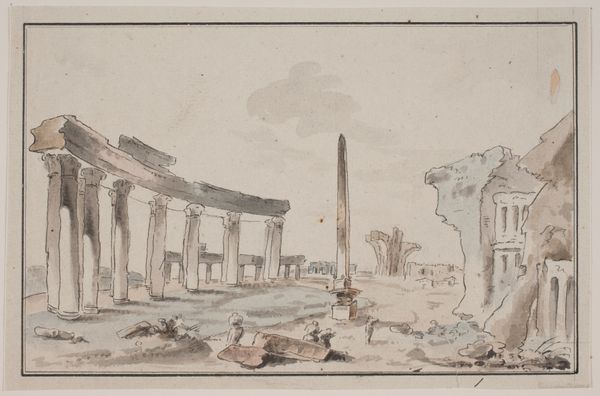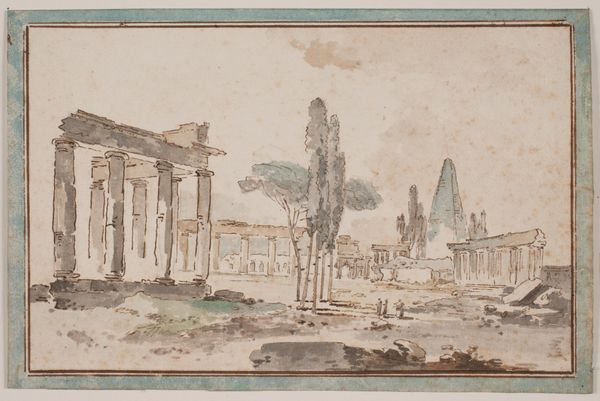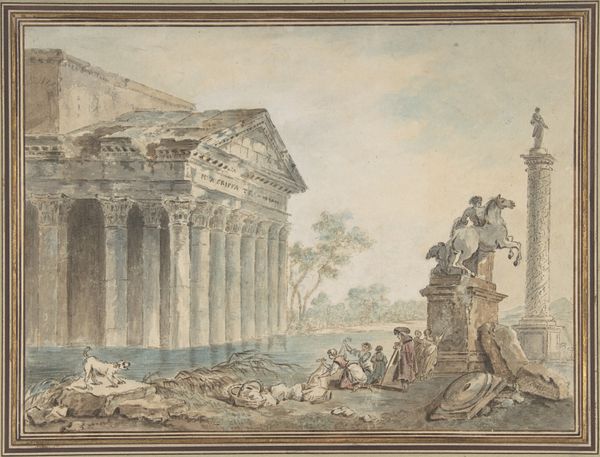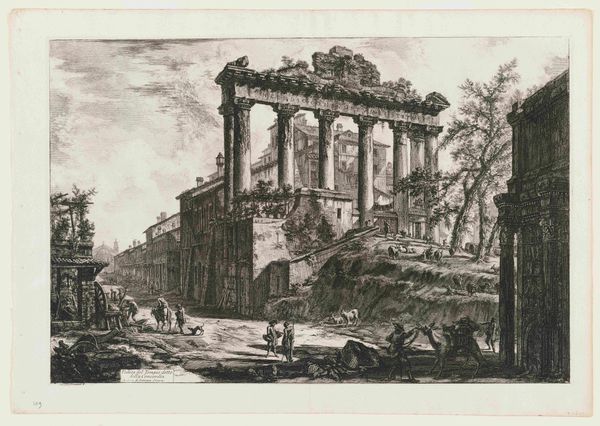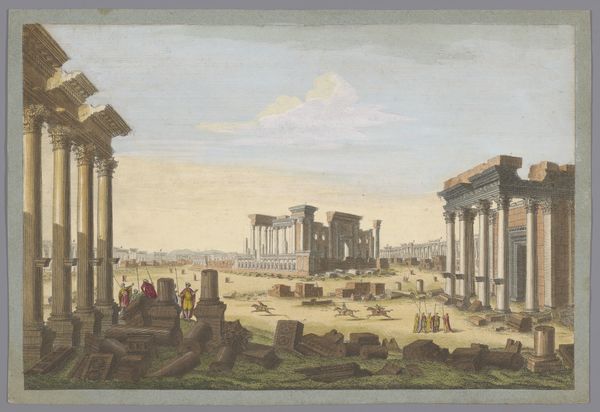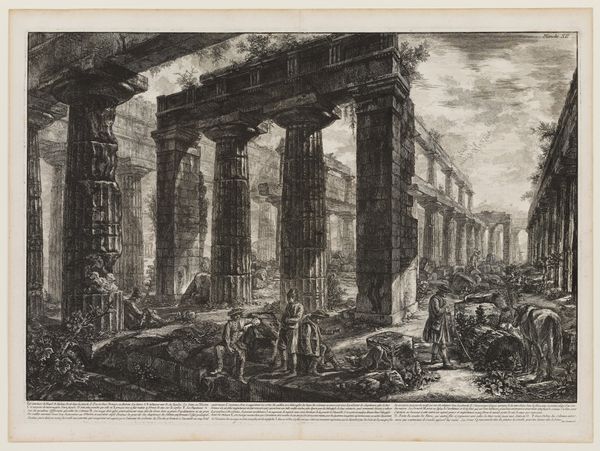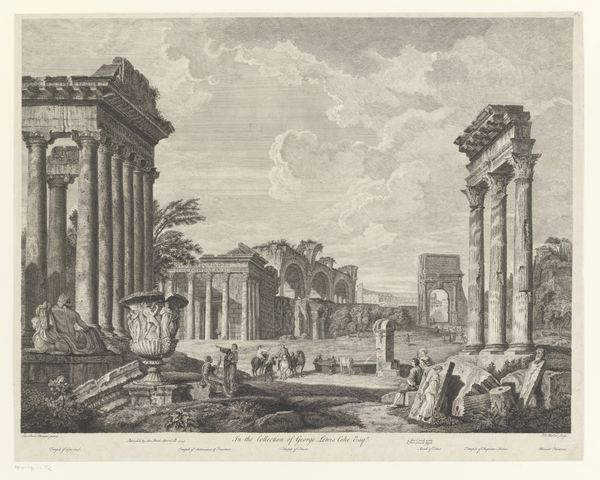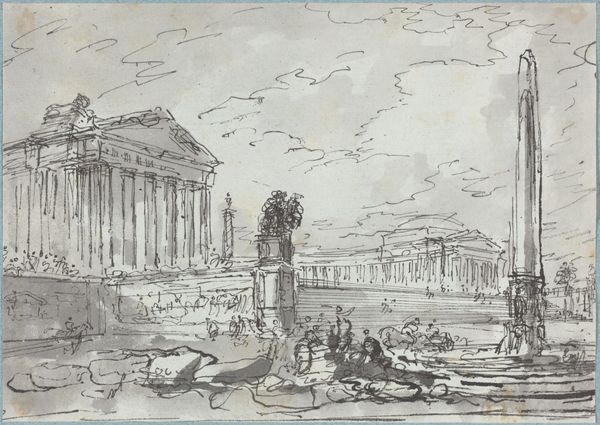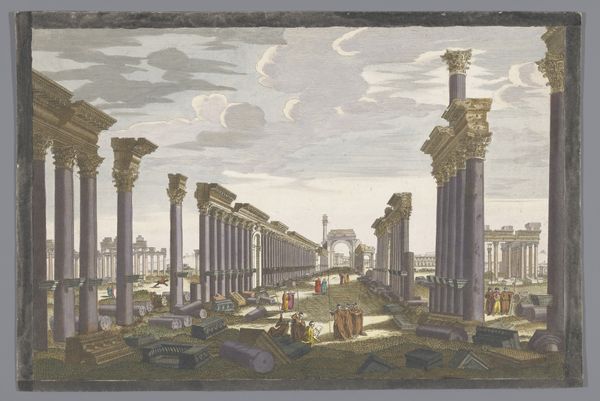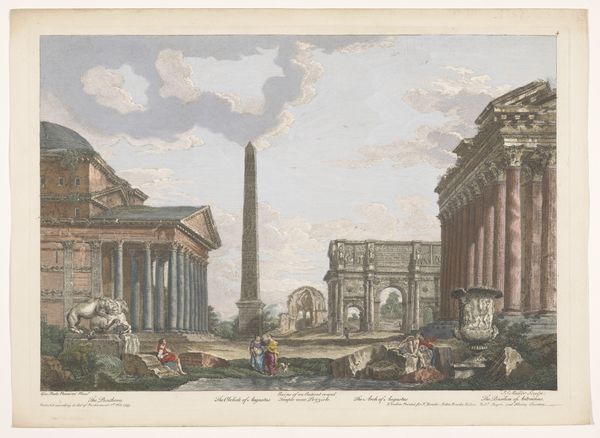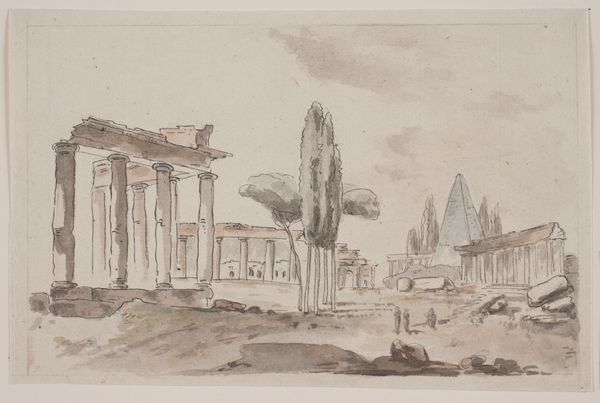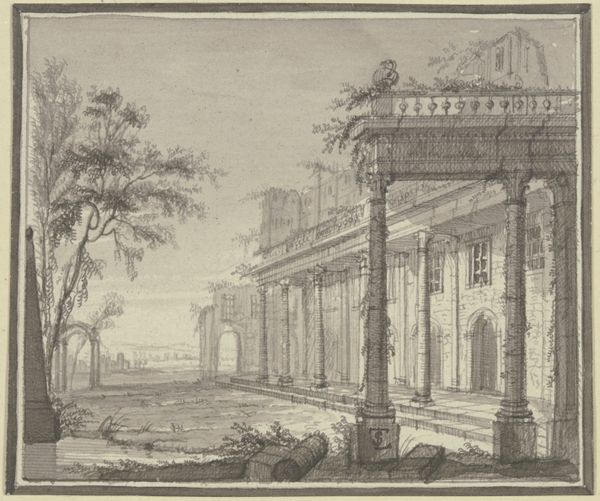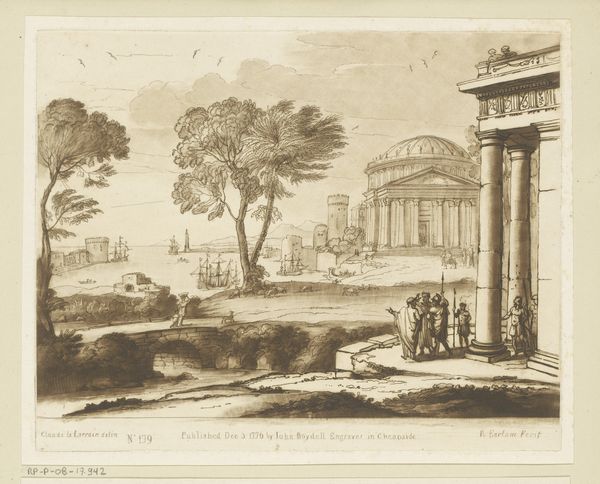
drawing, plein-air, watercolor, ink
#
drawing
#
ink painting
#
plein-air
#
landscape
#
etching
#
perspective
#
watercolor
#
ink
#
classicism
#
cityscape
#
history-painting
Dimensions: 143 mm (height) x 216 mm (width) (bladmaal)
Editor: So, this drawing, "'Romersk' prospekt," by Jens Petersen Lund, dated sometime between 1730 and 1793...it feels like a study of ruins, maybe done *en plein air* given the looseness of the ink and watercolor. What historical context shapes how we should view a scene like this? Curator: That's a perceptive reading. The depiction of ruins became incredibly popular, fueled by the Grand Tour and the rise of Neoclassicism. Artists, particularly those from Northern Europe, flocked to Rome to study classical antiquity. They sought authenticity in their renditions. What do you notice about *how* Lund depicts these ruins? Is it simply documentation? Editor: Well, there's a romantic quality to the decay, almost like the buildings are melting back into the landscape. The tiny figures in the foreground seem dwarfed, highlighting the monumentality but also the impermanence of these structures. Curator: Exactly! And that's where the politics of imagery comes in. While seemingly objective, these prospect views participate in constructing a specific narrative of power and history. Who controlled the image of Rome? Who could afford to travel and commission such works? It wasn't simply about appreciating the past; it was also about claiming a lineage and a cultural superiority. Consider the choice of perspective – is it accessible to all, or is it reserved to the empowered few? Editor: So, the drawing isn’t just a neutral depiction but an active participant in a broader cultural and political conversation of its time? Curator: Precisely. Lund's work reflects the prevailing attitudes of his era. It also reveals a certain longing for a 'classical' past. These weren't just records but carefully crafted statements about civilization, decay, and the ongoing power dynamics within European society. Editor: That really shifts my understanding of it. It’s more than just a pretty landscape drawing. I didn’t consider the inherent power dynamics baked into what seems like an objective art piece. Curator: That's the key! Art doesn't exist in a vacuum, but it's always engaged with the forces and politics of its own time.
Comments
No comments
Be the first to comment and join the conversation on the ultimate creative platform.
